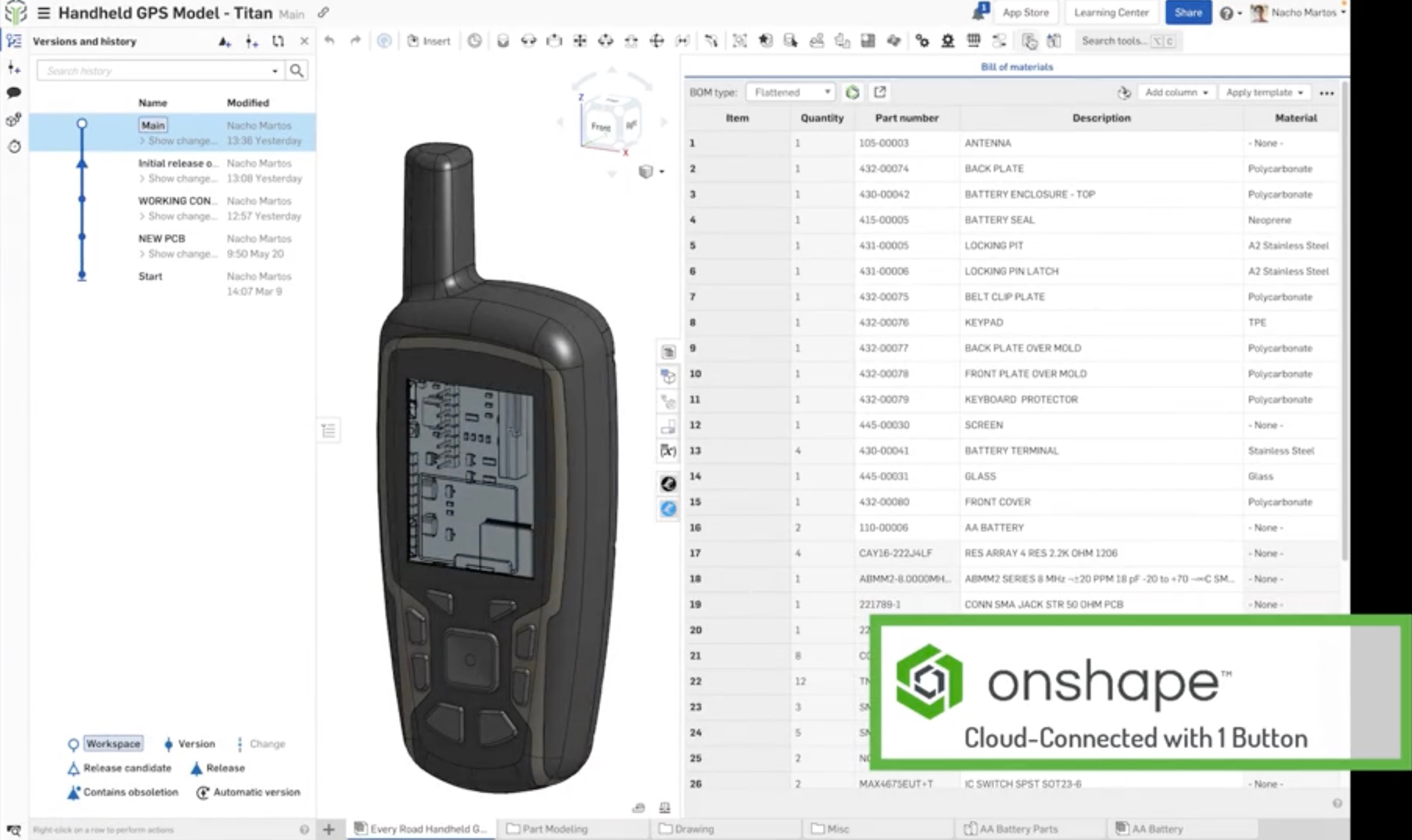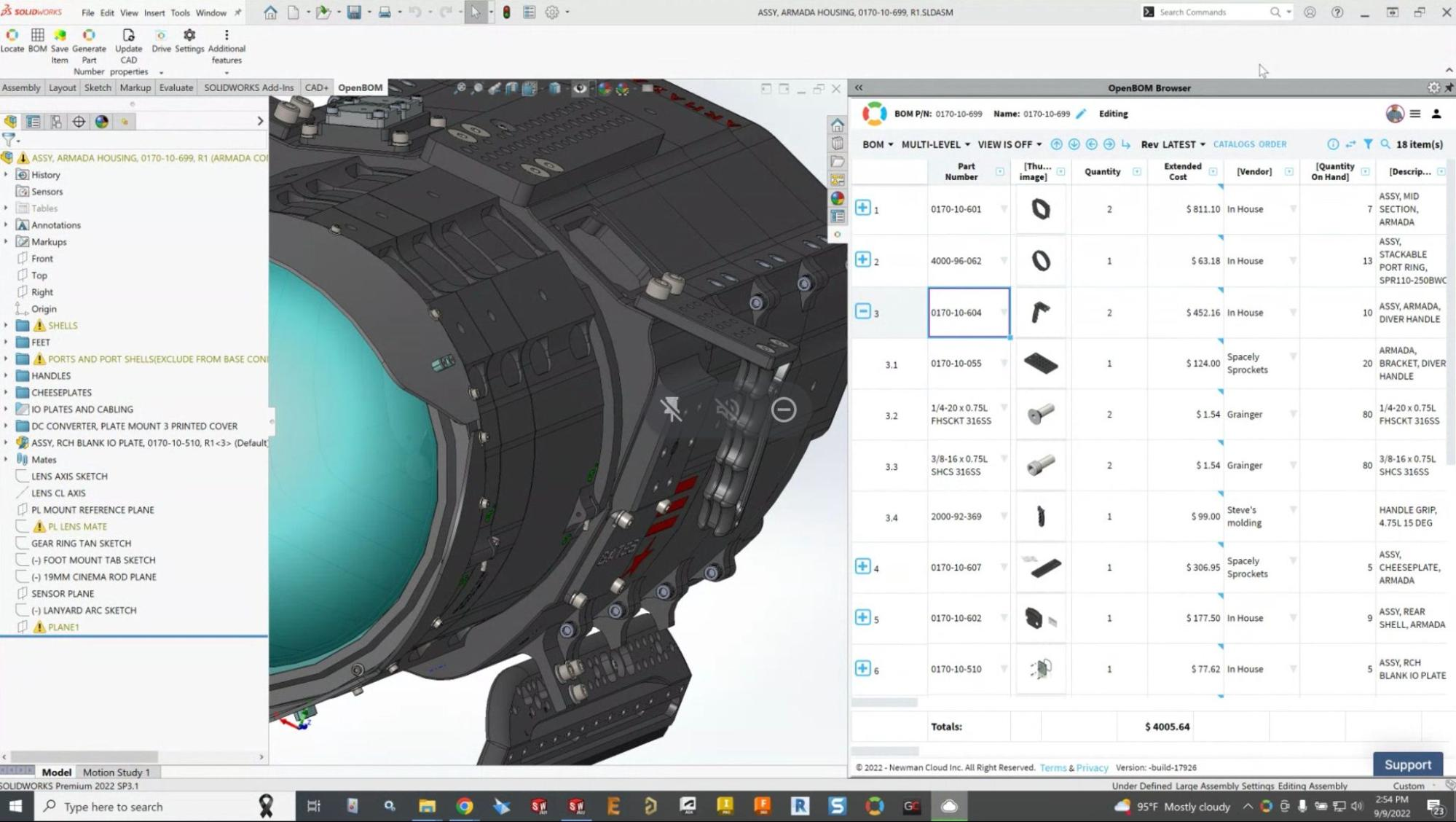
In today’s digital world, everything is connected. We can order a pizza, track our fitness, and manage our finances with just a few clicks on our smartphones. So why isn’t business-to-business (B2B) collaboration as easy as it seems?
Integration was a big question from the early beginning of engineering software development. CAD, PDM, PLM, ERP, and other system implementations were screaming for the need to integrate for many years. Passing geometry, additional information about components, price, sourcing, and manufacturing process – this is just a short list of information that must reside in different systems as the engineering and manufacturing process is moving.
After many years, plenty of businesses still struggle to connect their product lifecycle and exist in a siloed environment where each system is independent and information is passed using old fashion Excel sheets with emails and file attachments. The intuitive desire of companies for years was to automate the process of data transfer. This is how the idea of “one-click” was born.
PLM systems were born to streamline the manufacturing processes, reduce manufacturing costs, and help manufacturing companies improve their manufacturing process and operations and to set up the right manufacturing process. Taking data from the early design stage and sharing it with the manufacturing process allows for lower costs (75% of the cost is defined during the design stage and not during manufacturing operations). The design process integrated with the design for the manufacturing process helps to make better design decisions, leads to the selection of better components, reduces cost, and increases quality. Knowing upfront what are components needed (especially long lead time components), helps to optimize purchasing process.
Why Integrations Are Complex and Hard?
While the integrations are a so obvious need, why are they so hard? It was a question from the very beginning of CAD, PDM, and PLM development. Many integrations were developed over the last 20-25 years to overcome this problem of passing data between multiple systems.
At different times, companies approached different to solve integration problems. Sharing files was pretty revolutionary two decades ago, but these days it might be considered a very painful and outdated way to integrate data. Two decades ago, the challenge was to create a neutral format that can be shared. These days, companies struggling with speed and data accuracy that hardly can be resolved by the manual creation of PDF and STEP files to be passed via dropbox service or email.
Here are 5 reasons why integrations are still both complex and hard these days:
- Legacy software systems are not good at integrations and vendors are not excited about the idea of providing APIs and other integration capabilities with old systems.
- Many companies (especially smaller companies) have a hard time investing substantial resources into integrations.
- Data locking is still a big idea, especially for existing large vendors that continue to focus on how to keep customers using their products instead of blending best-in-class software and services.
- The big idea of seamless vertical integration where the only way to get things well integrated can be achieved by buying different software solutions from a single company. Companies are investing in big sinkholes to find later that vendors are selling a blend of products purchased from multiple companies without support for seamlessly integrated information flow.
- Education and knowledge are needed to architect the data integration in a company, which leads engineers and companies to automate dumb-down tasks such as “export-import” of files without thinking about how to apply new integration principles and technologies.
One-click Connect is The First Step
The simplest idea that always comes to any engineering brain – is let’s just make a button that will push the data from one system to another one. PTC is a great example of such a “one-click” solution coming from a vendor owning both products – Onshape and Arena PLM. Both products now belong to PTC and the demand to integrate them is pretty high. Onshape blog – 4 ways how to connecting of cloud CAD, PDM, and PLM to improve the DFM process.

Here is an interesting passage:
Cloud-native CAD solutions like Onshape integrate CAD and product data management (PDM) capabilities in a single platform. This eliminates the need to manually manage design files, thereby reducing errors. With built-in version control, the most current and accurate designs are always accessible to team members. Cloud PLM solutions like Arena help engineers, quality, operations, and even external partners practice DFM throughout the product lifecycle—from prototyping and sourcing to product fabrication, testing, and delivery. By aggregating the entire product record, everyone has instant access to designs, BOMs, AMLs, drawings, and assembly instructions to ensure that products are built within quality and cost constraints. With a simple click of a button, Arena and Onshape users can access information between the Cloud PLM and CAD systems.
Another example of integration based on the “one-click” event is OpenBOM “one-click” integration with CAD systems. Check the following article to learn about the one-click experience is integrated with the seamless browser user experience.

The advantage of a “click” is that it keeps existing systems with almost no changes while allowing us to pass the data between them. At the same time, modern cloud and web technologies open the opportunity to move from the click-driven architecture to seamless data access using web services. Let’s talk about it more.
Immersive Data Access and Connected Flow
Data is the centerpiece of every solution. We like the data to be available on multiple devices, presented in a variety of contextual forms when we need it, and allow multiple people to have the information to support their decision process without the need to synchronize the information between multiple systems.
The idea of seamless integrations came to business software from web solutions where data was much more important from the beginning (compared to business software where everything started from the applications). Making data seamlessly available as a web mantra that later moved to support consumer applications with seamless data access and now coming to B2B SaaS software (thanks to all technologies developed over the last two decades).
There are two fundamental elements of seamless data access and organization of connected information flows.
- Web services capable to pull information based on the event-driven process and accessing data seamlessly
- Configurable user interface components capable to present contextual information to organize an integrated user experience.
What is my conclusion?
Integrations are the big deal for modern engineering and manufacturing systems. The industry is moving toward organizations of connected business relationships where engineering, manufacturing, customers, and maintenance teams can get seamless access to the information when and where they need it. This is a challenge for old fashion desktop and legacy PLM software which is limited to LAN/VPN access. Cloud software is also not a magic button because the devil is in detail and dependent on how modern technologies and open data principles help to connect these systems going beyond “one-click” data syncs. Just my thoughts…
Best, Oleg
Disclaimer: I’m co-founder and CEO of OpenBOM developing a digital cloud-native PDM & PLM platform that manages product data and connects manufacturers, construction companies, and their supply chain networks. My opinion can be unintentionally biased.










